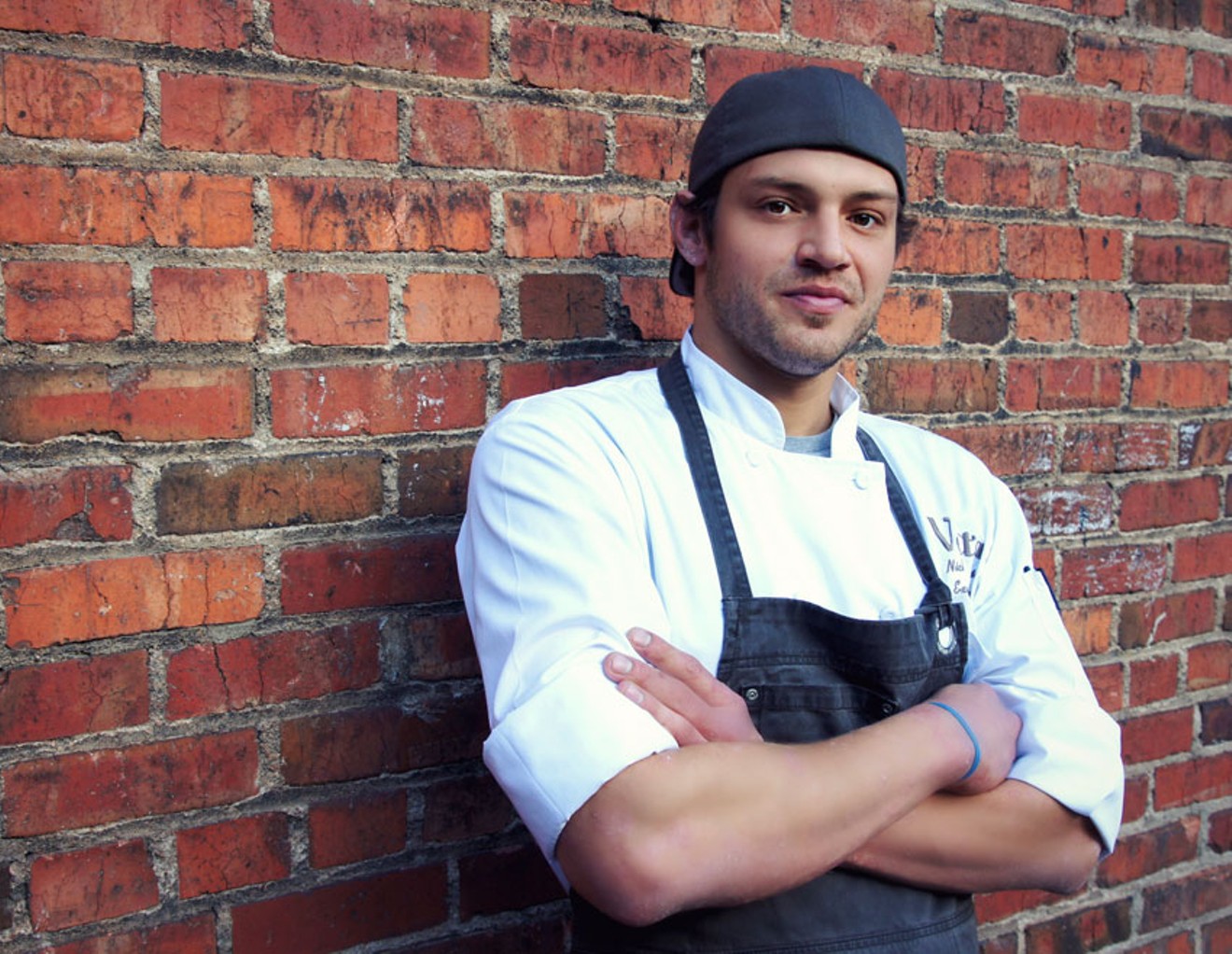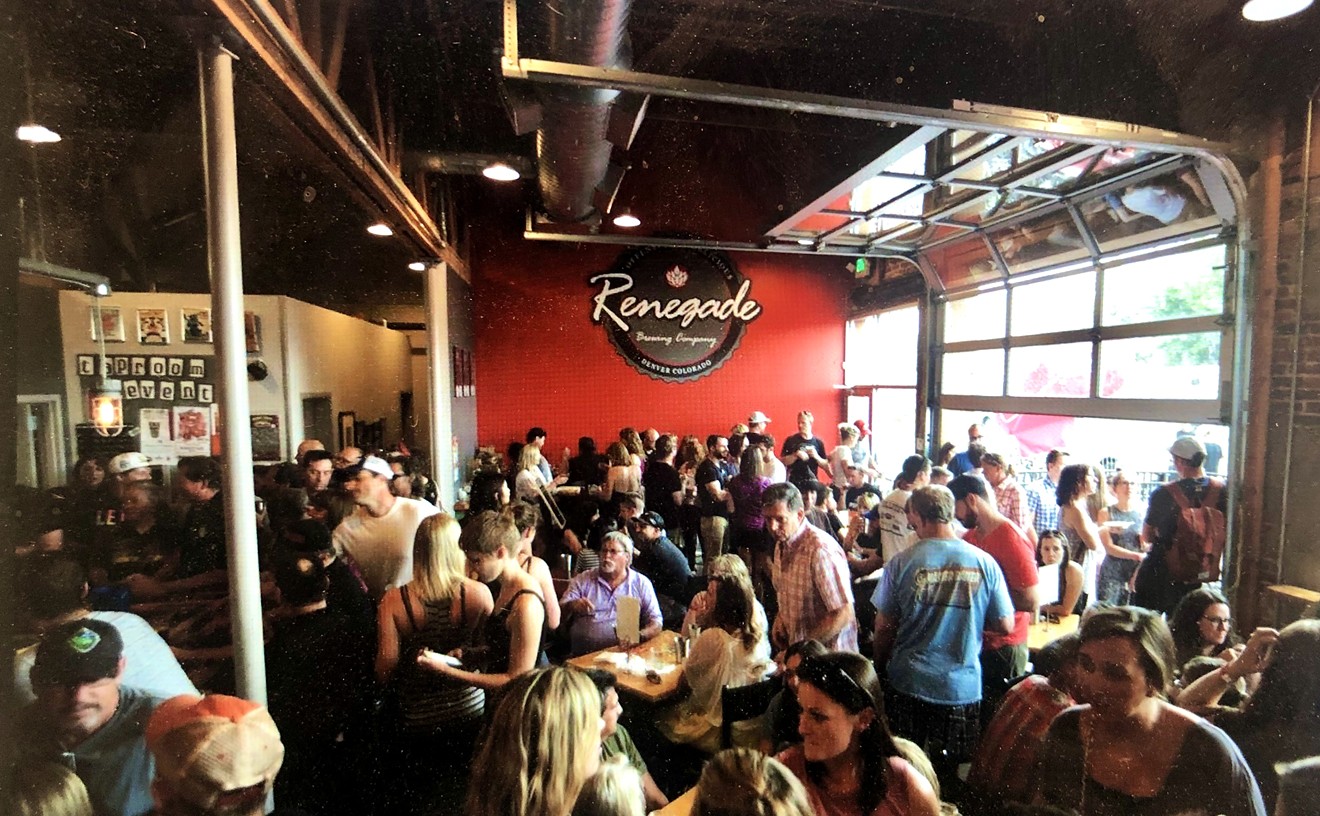When Nick Kayser took control of the kitchen at Vesta last year, he became just the third chef to fill the role in the restaurant’s two-decade run. This was no maintenance job: Owner Josh Wolkon tasked Kayser with overhauling Vesta’s menu, preserving its global roots and penchant for bold flavors while jettisoning the focus on dipping sauces. The chef had plenty of background to pull from; after growing up in Denver, he’d manned burners in New York City, Las Vegas and Hong Kong, developing an appreciation for ingredients and cooking techniques around the world. He brought all of his experience to bear at Vesta, where he’s drawing inspiration from regions as diverse as Southeast Asia and Latin America to create a seasonal menu.
We recently talked with Kayser about his journey (which includes dark moments in Vegas), the lessons you can only learn abroad, and his hope for the downtown Denver dining scene.
Westword: What brought you to this point?
Nick Kayser: I fell into restaurants. I’d gone to college for a white-collar education, but I came back to Denver and started working at Mao in Cherry Creek to earn some supplemental income to bridge the gap between my education and profession. I was running food and expediting, and all the criticism and jeering in the kitchen made me want to be better and not deal with that shit. I fell in love with kitchens, and I committed to working in restaurants. I went to culinary school and then booked a one-way ticket to New York. If you’re going to do it, you’re going to do it.
In New York, I was willing to do whatever it took, including walk the chef’s dog. I landed at Ouest, and because of my work ethic and being at the right place at the right time, I moved up fairly quickly into a chef de cuisine role. Ouest was very similar to Vesta in that it was dinner-only, and it had an independent owner and we were using seasonal ingredients to craft dishes. That’s where my creativity blossomed. Tom Valenti, this celebrity chef from New York, really loved cooking for people, making people smile, seeing the response as people eat. That really rubbed off on me. The food there was definitely southern French, northern Italian, Mediterranean, with rich, buttery flavors. It was the style of gorging that doesn’t exist anymore. Tom was dubbed the flavor king of New York; things were cut or on the plate for a reason, because they had more of an impact on flavor or less of an impact on flavor. I evolved my own style; I lightened it up and put pressure on refinement and consistency.
When I took the chef de cuisine position, I was young, only 24, and Tom had a conversation with me and said, “If you accept this position, I’m confident you can do it, but there’s no going back at that point. Once you do this, you’re not going to want to be told what to do by anyone else. It’s going to be an effort, moving forward, to gain self-education. You’re going to have to do that on your own.” I’ve always sought out further education — I love that about this business. If you were to go to bed thinking you knew everything, you could wake up and feel decades behind.
With that in mind, I jumped into a hotel opening in Times Square, because I wanted to learn food service and room service. I went back and forth between corporate and independent restaurants, trying to find a niche. I got involved with a small restaurant group — all thirty-, forty-, fifty-seat spots specializing in Southeast Asian-inspired food. Then I went to the Smith, which had 350 seats and did $20 million a year. I don’t think I picked up a knife for fourteen months. There, it was about coordinating a dance. There are so many different parts, and if one spoke breaks, the whole wheel falls off. I got burned out. It’s good to understand that beast, but I wanted to focus more around the hearth and food than what I could do there.
I went out to Vegas and worked for a hotel, more on a consulting level. The intention was to develop some menus, find a replacement and get out. Vegas was a fast-paced lifestyle. I questioned what I was doing in this industry a little bit at that point — Vegas behind the scenes is as dark as it is on the streets. You start to see how it all moves, and it was a lot. It wasn’t a foreign country, but it was foreign to me. I was living in the hotel, fully surrounded by it at all times. I’d wake up, work, go to bed and never leave. You have absolutely zero balance. It’s mentally overwhelming. You get tunnel vision, and you can’t see anything else; there’s no creative input or outlet. I don’t derive a lot of influence from cookbooks, because you can’t taste it, smell it, ask questions. I love eating different people’s cuisines and sitting at a dining-room table. So I took some time off to come back to Denver.
I’ve always said this industry can take you around the world, and it did — I got the opportunity to go to Hong Kong with Laurent Tourondel, and I took the chance to see the world, see food that’s esoteric for the American palate and see the story behind it. You feel like you’re at 100 percent, and when something like that comes along and you pull the trigger, suddenly you re-establish your ceiling. You’re forcing yourself to get lost and find your way out of it. Figuring it out calmed me down. I realized that whatever comes my way, there’s a way.
People who don’t leave their comfort zone never will understand that. And you learn how different the work environment is: It’s a work culture there, which puts things in perspective. You realize: I’m bitching about a fifty-hour work week, and they’re working two fifty-hour work weeks. The cuisine that I was doing out there was Western — it was a French-driven steakhouse — but I was surrounded by dried squid and Peking duck and markets, and I was making trips to Penang [Malaysia] and India, to see what this food actually tastes like and where it comes from. It opened my eyes up to different cuisines. I’m not shy about jumping into a shack in Bali and making tamarind peanut sauce with an old woman, which I did. The United States is such a melting pot — there’s so much global diversity, and we don’t really have a long history, so it’s fun to get to the origins of these recipes.
My contract was up after two years, and you can only miss so many Mother’s Days. I was living abroad and owning it, but I started to want to establish something and look to the future. I met Josh [Wolkon], and it was awesome to think about being part of the culinary growth in Denver. It was an opportunity to put fresh eyes on a twenty-year-old restaurant. Josh always says he was waiting for this block to develop for twenty years, and it’s here now — so what do you do with it? We evolve, and so does our clientele. Putting my influence on this menu, though, is definitely a balance; I’ve got to check my ego at the door. I don’t want to put in jeopardy something that’s worked for twenty years. This is also my first crafted menu without anyone culinarily above me, so I wanted to stick with the brand and where Josh wants to go culturally. My vision for the food was a little more feminine, modern and approachable. We’re touching upon these deep corners of the world, with fairly dramatic influence from many regions, and these bold, sexy flavors that Vesta has always brought to the table. The plating needed to be finessed. I’m a firm believer that I want to offer something on a culinary level that you cannot do at home, to provide something elevated that doesn’t necessarily follow the old meat-starch-vegetable format. I don’t think people want to sit down and gorge anymore.
Vesta just launched a new menu. Can you give us a few highlights?
I’m really excited about the vegan dish: We’re bringing in some Sonoran nopales [cacti], chopping them and cold-smoking and grilling them, then serving them with jicama tortillas. This is what we’re going for — unique ingredients from around the world, done in a very feminine, modern, refined way. We ran the dish as a special and got a good response. I’m also making my own XO sauce and using it to glaze ribs. It’s Rockies season, so this is a good way to hit a couple of ribs and grab a cocktail before a game. We have a spring salad from GrowHaus, and we really build the flavor into the salad using avocado mousse, watermelon radish and three kinds of lettuce. It’s light, fresh, exciting, and still has an eyebrow-raising moment. I’m always excited about Nadine [Donovan]’s desserts. I lost the battle on cioppino [a winter dish that proved popular], so it’s staying. And then the bucatini carbonara with green garlic, house-cured pancetta, guanciale, ramps and poached eggs.
Where does the local restaurant scene go from here?
At the end of the day, Denver is still a steak-and-potatoes town — and no matter what, our top seller is the beef and mashed potatoes. But I think the age of the destination restaurant is dying, and the neighborhood bistro is really gaining traction. Look at Tennyson Street, RiNo, Park Hill. That makes sense: You can go have three glasses of wine instead of one because you don’t have to drive. It also means we’ve evolved to a more casual dining town, which makes downtown a tough market. I don’t want it to get to a point where it’s so casual that it loses the meaning of a good night out.
One of the proudest moments of my career is when we relaunched Vesta in November. I felt that we really did something right, and the last four months have been overwhelmingly positive. It’s proof that you can work and work and work and put all the time and heart into it, and then find a place back in your home town and share that with your family. It’s good to find peace of mind professionally.
Vesta
1822 Blake Street
303-296-1970
vestadenver.com
Hours: 5 to 10 p.m. daily
[
{
"name": "Air - MediumRectangle - Inline Content - Mobile Display Size",
"component": "12017618",
"insertPoint": "2",
"requiredCountToDisplay": "2"
},{
"name": "Editor Picks",
"component": "17242653",
"insertPoint": "4",
"requiredCountToDisplay": "1"
},{
"name": "Inline Links",
"component": "18838239",
"insertPoint": "8th",
"startingPoint": 8,
"requiredCountToDisplay": "7",
"maxInsertions": 25
},{
"name": "Air - MediumRectangle - Combo - Inline Content",
"component": "17261320",
"insertPoint": "8th",
"startingPoint": 8,
"requiredCountToDisplay": "7",
"maxInsertions": 25
},{
"name": "Inline Links",
"component": "18838239",
"insertPoint": "8th",
"startingPoint": 12,
"requiredCountToDisplay": "11",
"maxInsertions": 25
},{
"name": "Air - Leaderboard Tower - Combo - Inline Content",
"component": "17261321",
"insertPoint": "8th",
"startingPoint": 12,
"requiredCountToDisplay": "11",
"maxInsertions": 25
}
]












